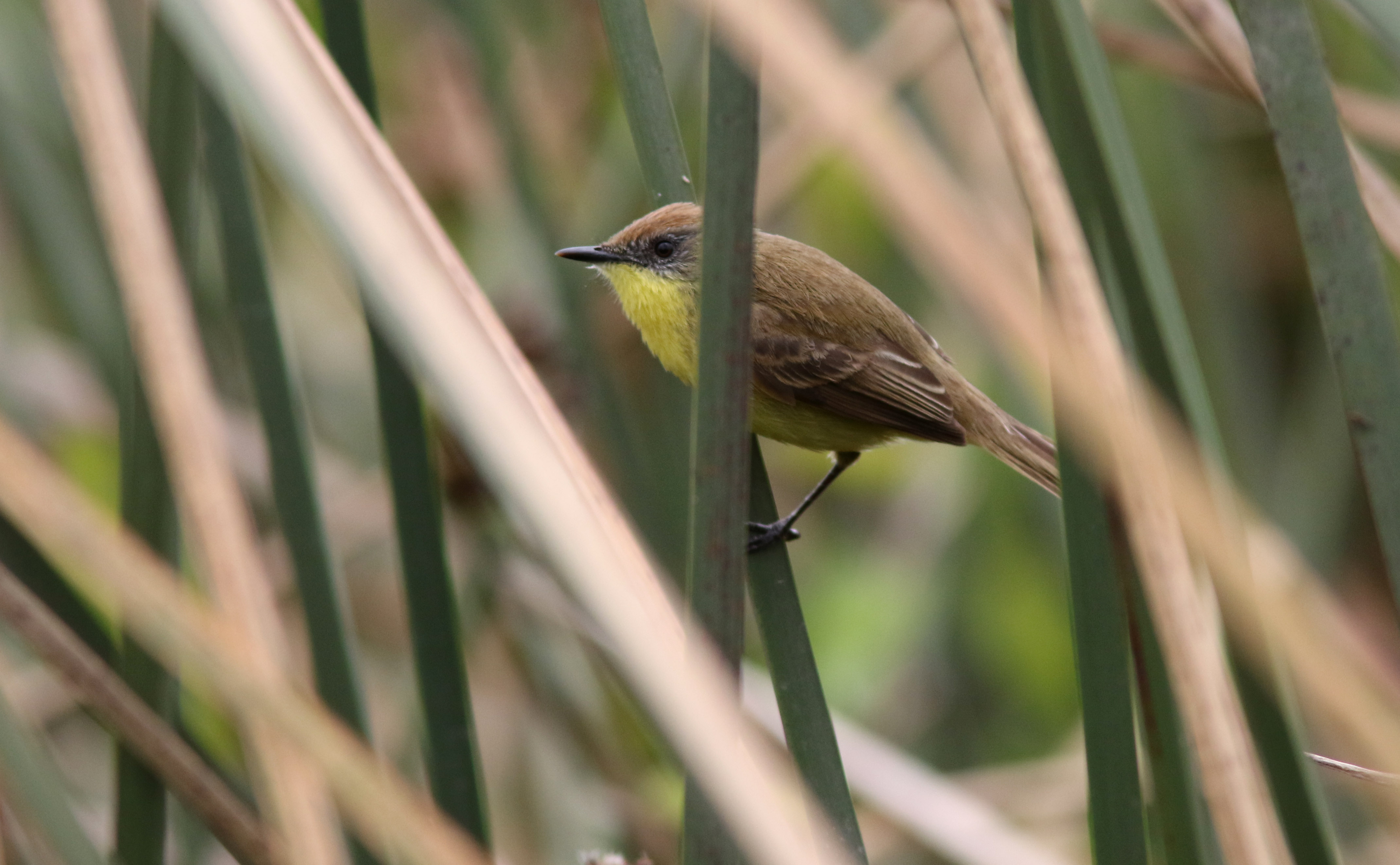Ticking Doradito
Pseudocolopteryx citreola
 Ticking Doradito ·
Pseudocolopteryx citreola
·
04-11-2017 · Henk Hendriks
Ticking Doradito ·
Pseudocolopteryx citreola
·
04-11-2017 · Henk Hendriks
| Datum | 4 november 2017 |
|---|---|
| Locatie | Maipo River Estuary |
| Fotograaf |
|
| Bekeken | 4436 × |
Zeldzaam in Chili. Het is nog steeds niet bekend waar deze soort overwintert. De rietvelden van Maipo River Estuary is een van de betere plekken om deze soort te zoeken. Na uren zoeken eentje gevonden door Wiel Poelmans. Volgens de rangers waren wij de eerste vogelaars die de Doradito dit voorjaar (november) hier waarnamen. |
Discussie
George Sangster
·
30 mei 2025 13:19, gewijzigd 30 mei 2025 13:19
Jordan, EA, Wu, MY, Tang, Q, Rheindt, FE & Areta, JI 2025. Evolutionary history and vocal differentiation in two cryptic Neotropical suboscines (Pseudocolopteryx citreola and P. flaviventris). Zoologica Scripta, in press.
The speciose family Tyrannidae harbours numerous morphologically cryptic species that differ most notably in their innate vocalisations. Among these, five belong to the Neotropical genus Pseudocolopteryx, including a pair of cryptic sister species, P. flaviventris and P. citreola, which differ markedly in vocalisations and exhibit an extremely low mitochondrial divergence. Using genome-wide ddRADseq data, we reconstructed phylogenetic relationships and assessed population structure within the genus and evaluated four speciation scenarios for the sibling species pair using coalescent-based demographic simulations. Phylogenomic analyses found no mito-nuclear discordance in tree topologies and no disagreement between Z-linked and autosomal locus trees in the genus. P. citreola was monophyletic and embedded within a potentially paraphyletic P. flaviventris, whilst population structure analyses (PCA, ADMIXTURE) recovered both as different units. Coalescent-based demographic simulations estimated their divergence ~550,000 generations ago (~0.55 to ~1.15 mya), with minor gene flow starting ca. ~935 generations ago (~935 to ~1965 ya), without eroding their separate evolutionary trajectories. Therefore, the previously reported low mitochondrial differentiation could stem from past hybridization. Vocal differences are key traits of the specific mate recognition systems of P. flaviventris and P. citreola that evolved in the context of plumage stasis and were likely influenced by concomitant habitat switches, playing a fundamental role early in the speciation process. In non-learner species such as tyrant flycatchers, minimal genetic changes may suffice to produce acoustic innovations critical to species recognition. Exploring morphological differences and developmental processes underlying vocal tract anatomy could provide deeper insights into how vocal distinctions arise and lead to speciation in cryptic flycatchers.
Gebruikers van het forum gaan akkoord met de forumregels.
